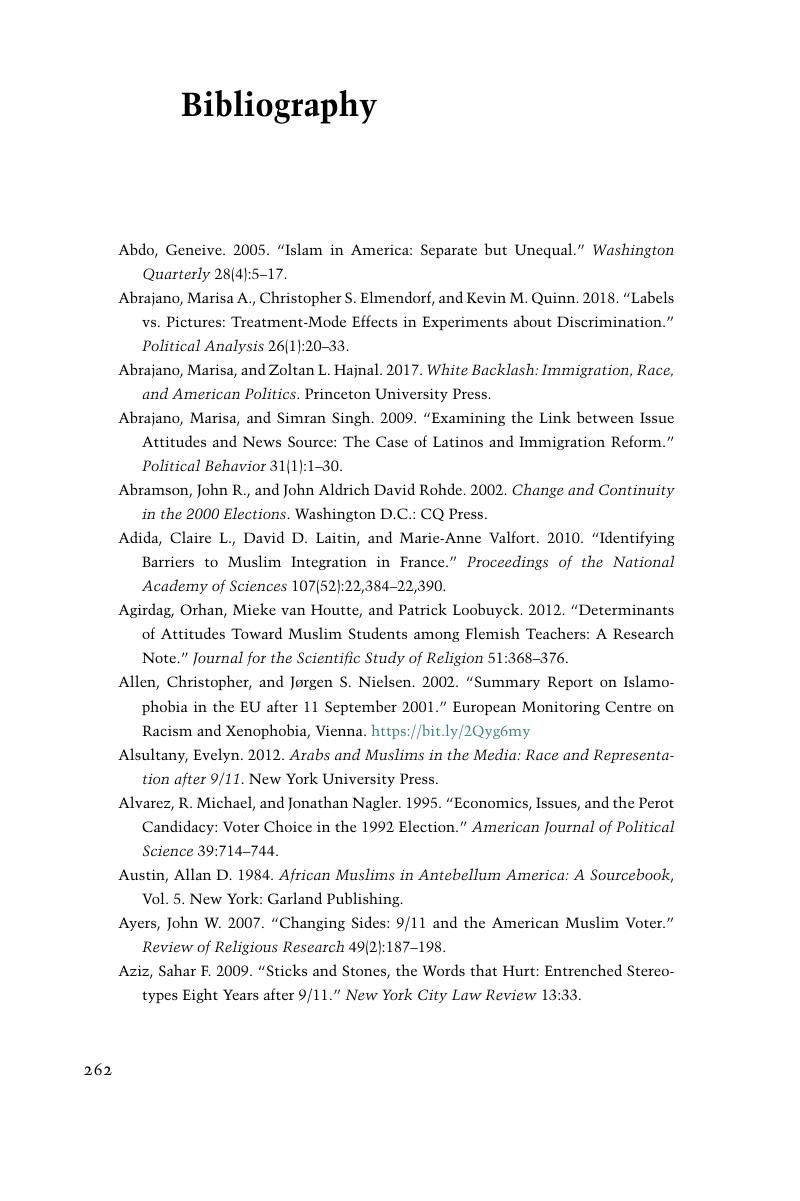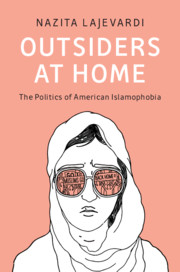Book contents
- Frontmatter
- Contents
- List of Figures
- List of Tables
- Acknowledgements
- 1 A Climate of Muslim American Hostility
- 2 Theoretical Framework: The Sociopolitical Positioning of Muslim Americans
- 3 Introducing the “Muslim American Resentment” Scale
- 4 Muslim American Prospects for Political Incorporation
- 5 The News Media’s Portrayals of Muslim Americans
- 6 Improving Mass Attitudes: The Media’s Role in Shaping Group Attitudes and Policy Preferences
- 7 Muslim American Representation: Outsiders in Their Own Country?
- 8 The Flipside: Muslim American Experiences of Discrimination
- 9 Conclusion
- Appendices
- Notes
- Bibliography
- Index
- References
Bibliography
Published online by Cambridge University Press: 08 May 2020
- Frontmatter
- Contents
- List of Figures
- List of Tables
- Acknowledgements
- 1 A Climate of Muslim American Hostility
- 2 Theoretical Framework: The Sociopolitical Positioning of Muslim Americans
- 3 Introducing the “Muslim American Resentment” Scale
- 4 Muslim American Prospects for Political Incorporation
- 5 The News Media’s Portrayals of Muslim Americans
- 6 Improving Mass Attitudes: The Media’s Role in Shaping Group Attitudes and Policy Preferences
- 7 Muslim American Representation: Outsiders in Their Own Country?
- 8 The Flipside: Muslim American Experiences of Discrimination
- 9 Conclusion
- Appendices
- Notes
- Bibliography
- Index
- References
Summary

- Type
- Chapter
- Information
- Outsiders at HomeThe Politics of American Islamophobia, pp. 262 - 283Publisher: Cambridge University PressPrint publication year: 2020



